12 Species of Christmas
You’re probably familiar with the famous holiday song The 12 Days of Christmas, first published in England in 1780 as a rhyme. The song most people know today is based on a 1909 arrangement of a traditional folk melody by Frederic Austin.
We decided to do our own take on the song, presenting instead “12 Species of Christmas” as portrayed within BHL books. This list of species is by no means comprehensive, but it presents some of the more well-known plants and animals associated with the holiday, as well as a few surprises!
Merry Christmas from BHL!
1. Christmas Trees!
We tend to think of Christmas trees as a single species, but there are in fact many different species used as Christmas trees around the world, including Fir Trees, Pine Trees, Spruce Trees, Cypress Trees, and Cedar Trees. Explore the species and enjoy this image of one of the varieties, the Norway Spruce, in BHL.
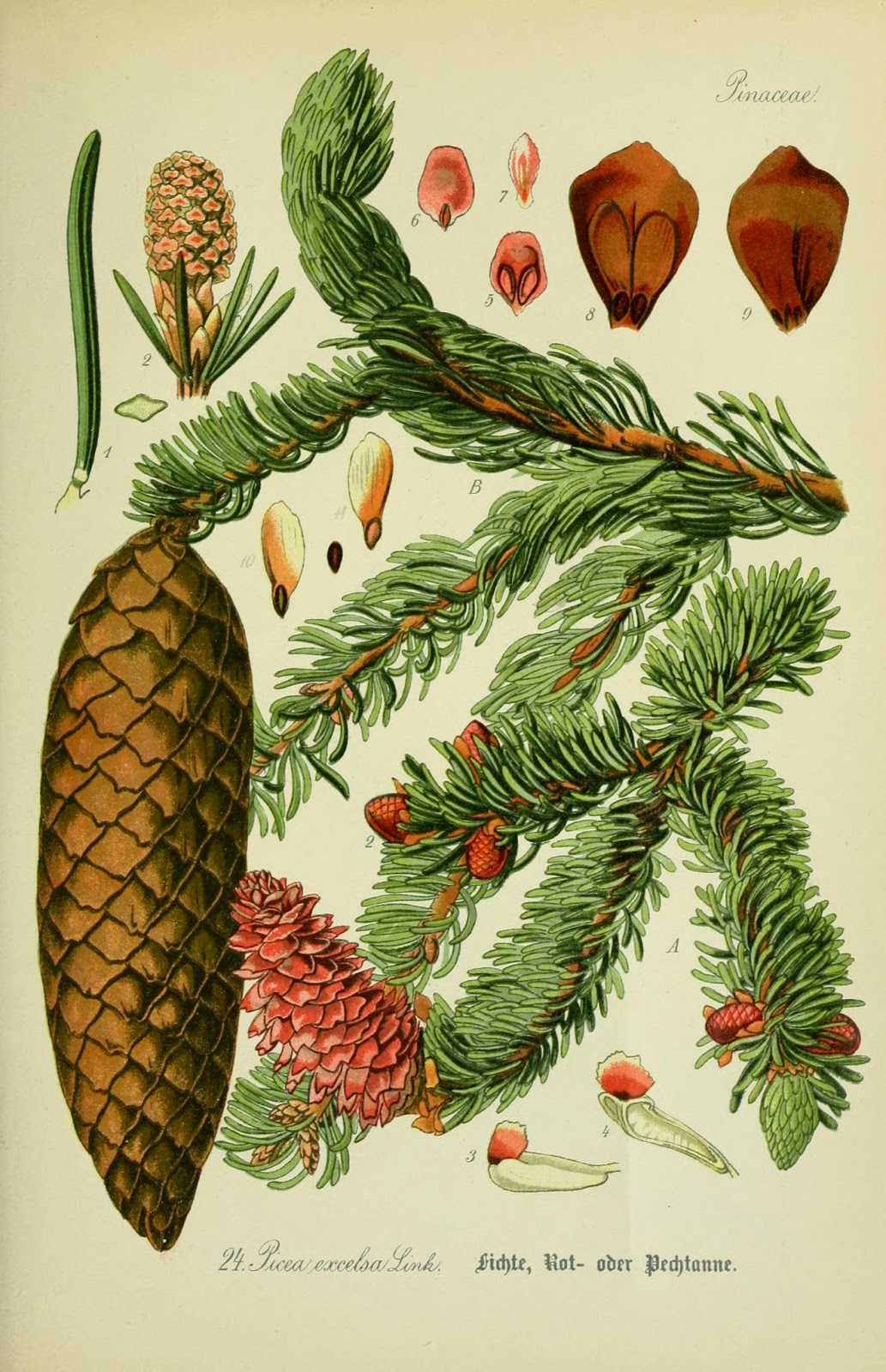 |
| Norway Spruce (Picea abies). Thomé, Otto W. Flora von Deutschland, Österreich und der Schweiz. Bd. 1 (1903). http://biodiversitylibrary.org/page/12306482. |
2. Reindeer
Santa can’t bring the presents to the children without his reindeer! Quick, take this quiz and see if you can name all 8 of Santa’s reindeer in under a minute.
Interestingly, Santa likely has female reindeer! Females retain their antlers through winter, while males lose theirs in the autumn.
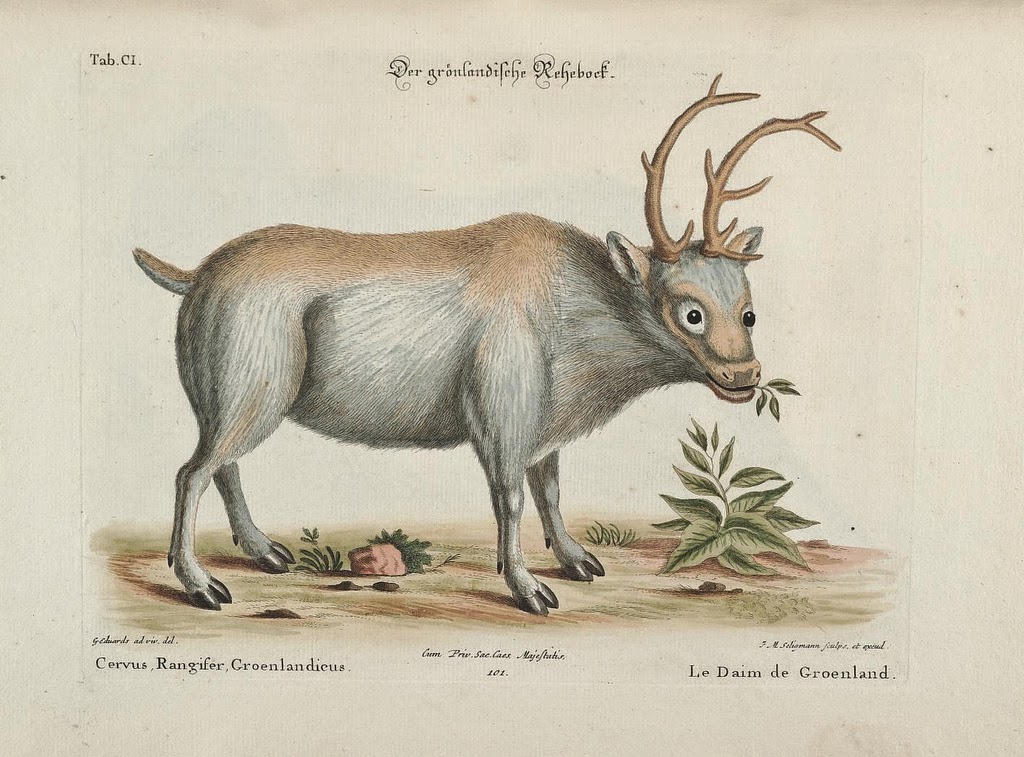 |
| Reindeer (Rangifer tarandus). Edwards, George. Verzameling van uitlandsche en zeldzaame vogelen. v. 1 (1772). http://biodiversitylibrary.org/page/11267501. |
3. Angelfish
We have our own kind of “angel” for Christmas: The Angelfish! Angelfish can refer to many difference species, including freshwater angelfish of the genus Pterophyllum and Marine angelfish of the family Pomacanthidae.
Pictured here is the Queen Angelfish (Holacanthus ciliaris), found near reefs in the warm waters of the western Atlantic Ocean. The illustration comes from Bloch’s Ichthyologie; ou, Histoire naturelle des poissons, an illustrated, scholarly compendium of all known fishes at the time of its original German (1785-95) and later French (1796) publication.
 |
| Queen Angelfish (Holacanthus ciliaris). Bloch, Marcus Elieser. Ichthyologie; ou, Histoire naturelle des poissons. v. 1 (1796). http://biodiversitylibrary.org/page/4786998. |
4. Mistletoe
Mistletoe in the Christmas tradition most commonly refers to the species Viscum album. Based possibly on Scandinavian origins, tradition holds that if a couple meets under the mistletoe at Christmas, they must kiss. Ironically, mistletoe is a hemiparasitic shrub…what does that say about its association with kissing and romance at Christmas?
 |
| Mistletoe (Viscum album). Köhler, F.E. Medizinal-Pflanzen. v. 1 (1883-1914). http://biodiversitylibrary.org/page/303620. |
5. Ginger
Love making gingerbread houses at Christmas? Well, powdered, dry ginger root is used as the flavoring for gingerbread, hence the name. The associated taxonomy? Ginger or ginger root is the rhizome of the plant Zingiber officinale.
 |
| Ginger (Zingiber officinale). Köhler, F.E. Medizinal-Pflanzen. v. 2 (1883-1914). http://biodiversitylibrary.org/page/303284. |
6. Partridge
Since our blog is based on The 12 Days of Christmas, we can’t neglect the species actually mentioned in the song. While we won’t present all of them here, we had to at least include the species from the first day of Christmas: A Partridge in a Pear Tree. Partridges are members of the pheasant family, and, interestingly, a ground nesters. So much for “in a pear tree”…
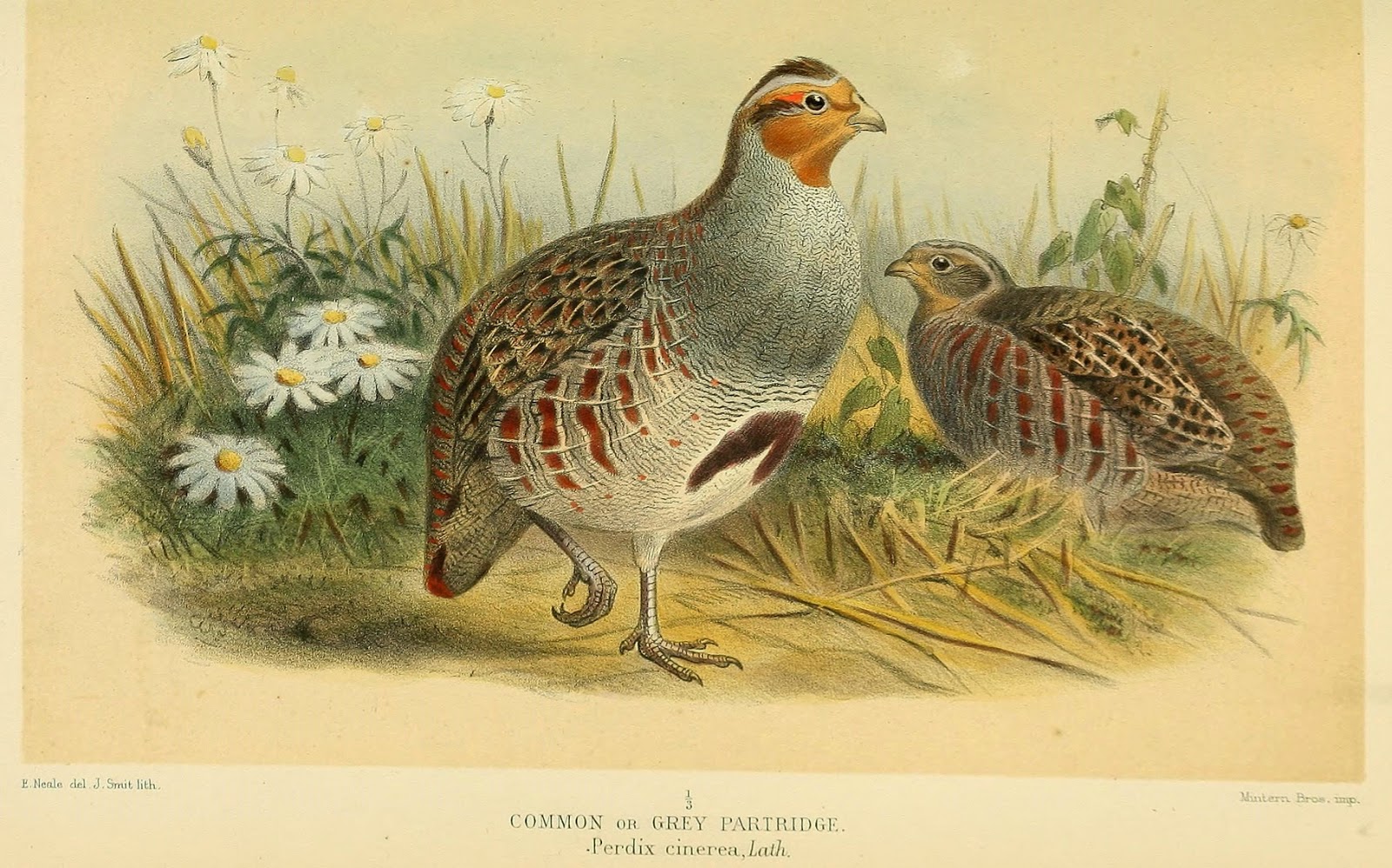 |
| Grey Partridge (Perdix perdix). Lilford, Thomas Littleton Powys. Coloured figures of the birds of the British Islands. v. 4 (1885-97). http://biodiversitylibrary.org/page/34517606. |
7. Poinsettias
Indigenous to Mexico and Central America, poinsettias (Euphorbia pulcherrima) are commonly used for Christmas floral displays. The common name is derived from Joel Roberts Poinsett, the first United States Minister to Mexico (where the plant had been used as part of Christmas decorations by Franciscan friars since the seventeenth century), who introduced the plant into the United States in 1825.
Did you know you can make a pH indicator from poinsettia leaves? Find out how!
 |
| Poinsettia (Euphorbia pulcherrima). Curtis, William. Curtis’s botanical magazine. v. 63 (1836). http://biodiversitylibrary.org/page/466234. |
8. Holly
The Holly species (Ilex aquifolium) is commonly used at Christmas time for decorations, often being incorporated into wreaths and adorning Christmas cards. But beware the bright red berries! Ingestion of more than 20 berries may be fatal to children.
 |
| European Holly (Ilex aquifolium). Step, Edward. Wayside and woodland blossoms : a pocket guide to British wild-flowers for the country rambler. (1895). http://biodiversitylibrary.org/page/21000230. |
9. Donkey
The song Dominic the Donkey was recorded by Lou Monte in 1960. It tells the story of a donkey who helps Santa bring presents to children in Italy, since the reindeer cannot climb Italy’s steep hills.
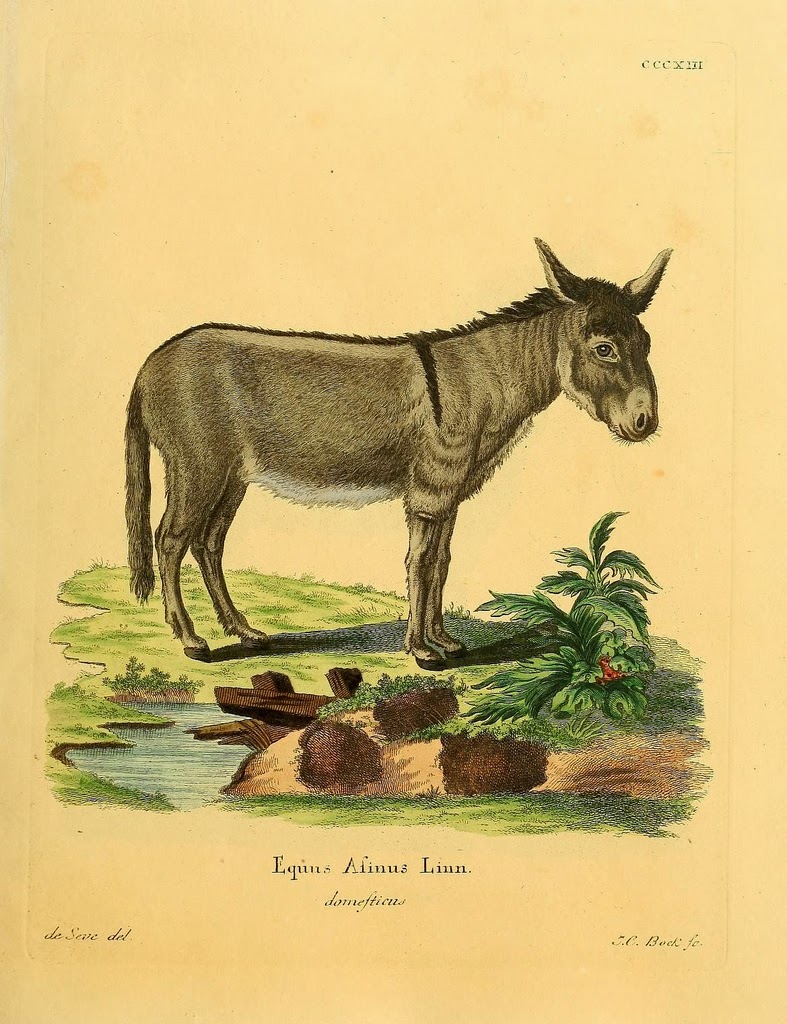 |
| Donkey (Equus africanus asinus). Schreber, Johann Christian Daniel. Die Säugthiere in Abbildungen nach der Natur. (1774-1846). http://biodiversitylibrary.org/page/31078278. |
10. Turtle Doves
On the second day of Christmas, in the aforementioned song, a gift of “2 Turtle Doves” is given. Members of the Columbidae family, Turtle Doves form strong pair bonds, and as such have become symbols of devoted love.
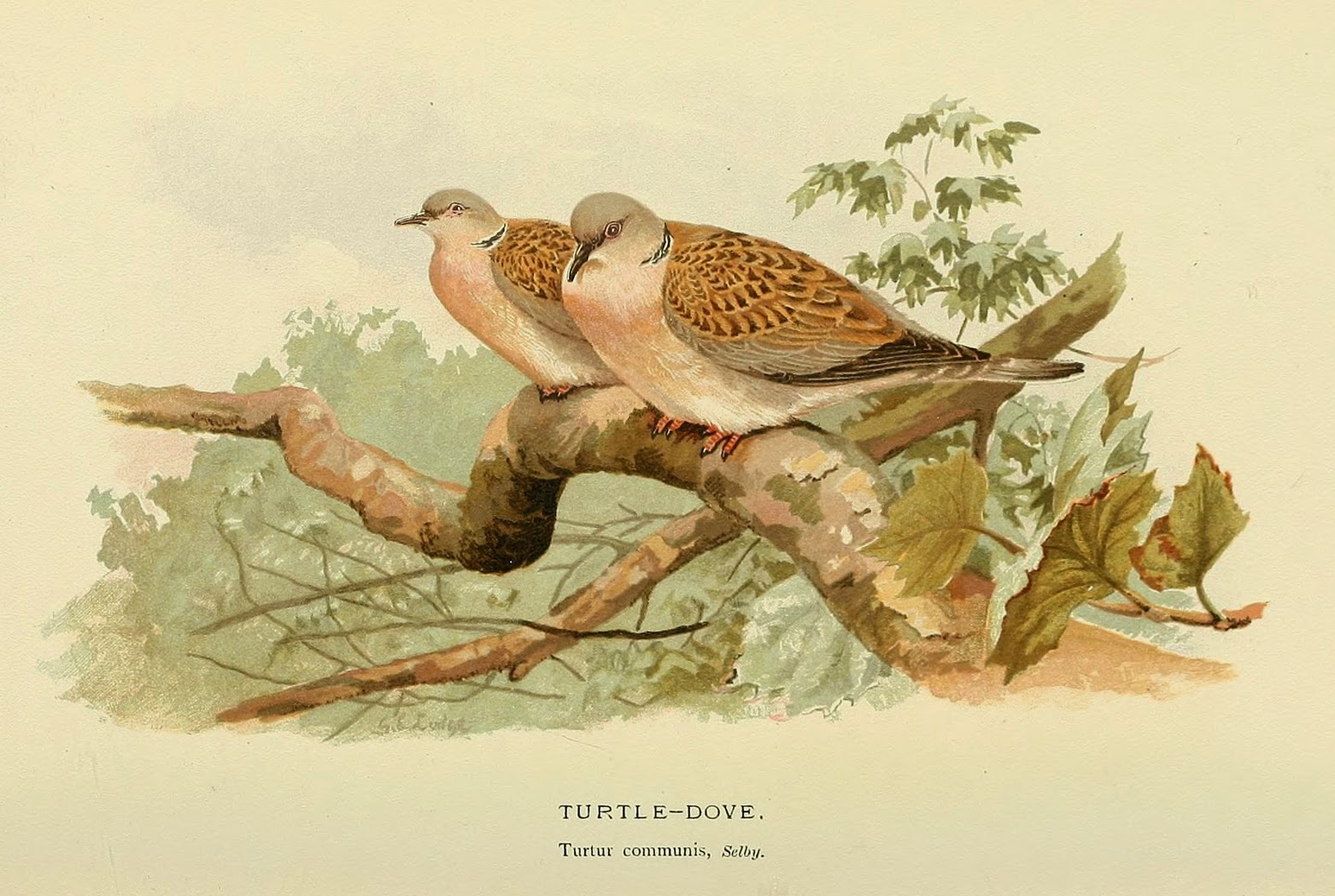 |
| Turtle Doves (Streptopelia turtur). Lilford, Thomas Littleton Powys. Coloured figures of the birds of the British Islands. v. 4 (1885-97). http://biodiversitylibrary.org/page/34517561. |
11. Polar Bears
Perhaps simply because they’re an arctic species, and Santa Clause resides at the North Pole, contemporary Christmas advertisements, toys, and decorations often include festive polar bears. Penguins are another oft-associated Christmas species, commonly seen alongside polar bears in holiday advertisements. However, penguins are found in the Antarctic, nowhere near the North Pole.
 |
| First published illustration of a Polar Bear (Ursus maritimus). Schreber, Johann Christian Daniel. Die Säugthiere in Abbildungen nach der Natur. (1774-1846). http://biodiversitylibrary.org/page/31064766. |
12. Fireflies
Nature has its own Christmas tree lights: Fireflies!
Beetles in the family Lampyridae are commonly called fireflies for their bioluminescence. The larvae also emit light and, in Eurasia, are known as glow worms. Thanks to some GIF magic from Smithsonian Libraries, these fireflies from Biologia Centrali-Americana in BHL comes to life!
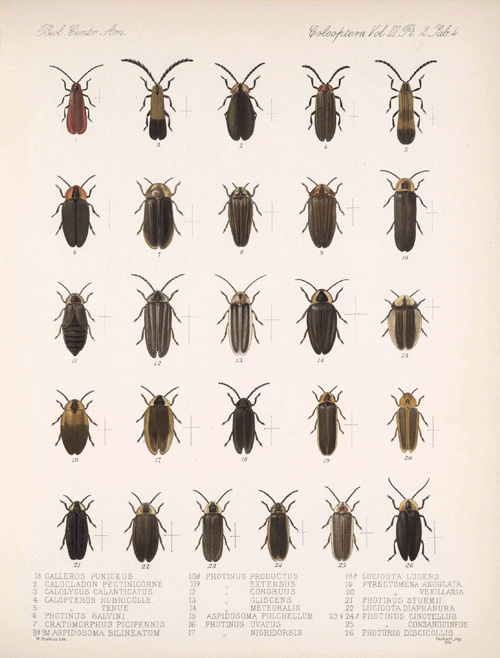 |
| Fireflies. Biologia Centrali-Americana. Insecta, v. 3, pt. 2 (1880-86). http://biodiversitylibrary.org/page/580274. |





Leave a Comment